
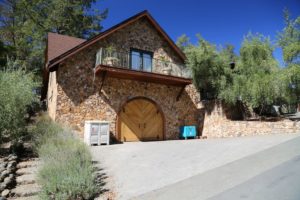
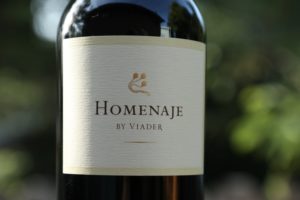 Viader Vineyards & Winery was founded in 1986 (with their first commercial release in 1989). The winery driveway is located almost on the tip of what locals call “Devil’s Elbow”, an extremely sharp hair pin turn located off of Deer Park Road. Be careful pulling in and out of their main gated entrance although it is of great assurance that most drivers slow down to a crawl to navigate around this sharp turn. Nearby winery neighbors include the original Burgess Cellars property whose winery burned down in the 2020 Glass Fire, and a vineyard owned by Danica Patrick for her brand, Sommnium.
Viader Vineyards & Winery was founded in 1986 (with their first commercial release in 1989). The winery driveway is located almost on the tip of what locals call “Devil’s Elbow”, an extremely sharp hair pin turn located off of Deer Park Road. Be careful pulling in and out of their main gated entrance although it is of great assurance that most drivers slow down to a crawl to navigate around this sharp turn. Nearby winery neighbors include the original Burgess Cellars property whose winery burned down in the 2020 Glass Fire, and a vineyard owned by Danica Patrick for her brand, Sommnium.
Viader is located on slopes around 1,200 feet – several hundred feet below the Howell Mountain Appellation which begins at 1,400 feet. The winery and property became a part of Crystal Springs on October 16, 2024 when it was approved by the TTB. The surrounding land is all hillside with great views of the northern Napa Valley. One of the most common expressions when visitors pass through the tasting room and walk out onto the deck is simply the word, wow. And that is all that is needed to summarize the inspirational views from this part of the valley.
Founder, Delia Viader is an international spirit; she was born in Buenos Aires, Argentina. The family moved based on her father’s work including time spent in Lebanon and Switzerland and a move to France at age 13. She earned her Doctorate in Philosophy from Sorbonne University in Paris; in 1984 moved to the United States to study business and finance at MIT. She also furthered her studies at UC Berkeley and UC Davis. She speaks 6 languages fluently. She purchased this property with an initial loan from her father, Walter Viader, an electronics engineer and later a diplomatic attaché for the United Nations. This was in 1986; she was only 26 years old.
When her father asked why she wanted to go into farming with her strong educational background, she told him she would be an educated farmer. Her knowledge and wine making skills are showcased perfectly at this small winery. She does not want to become a large producer; she needs to oversee all wine produced here before it is released. Delia has borrowed numerous practices from the French wine industry and uses them at Viader.
One of Napa Valley’s most respected former winemakers Tony Soter was Viader’s consulting and founding winemaker. Well regarded Michel Rolland used to be their consultant on all blending decisions. He is the world’s “master blender”, consulting for many wineries in Bordeaux France as well as a number of international wineries. We read somewhere that he tastes between 30,000 and 35,000 different wines each year. Today Delia’s son, Alan Viader is Director of Operations and Winemaking; he took over the winemaking in 2006 and earned a degree in Viticulture Management from Sonoma State University. Delia’s daughter Janet is the Director of Marketing and Sales.
Alan also founded Intentus, his own small wine brand focusing on limited production wines made from both Napa Valley and neighboring Sonoma County. He is a first responder and was inspired to give back during his time fighting the terrible fires in Paradise, California in 2018 which ultimately destroyed much of that town. Proceeds from the sales of Intenus wines are donated to supporting First Responders and related charitable organizations.
The Viader property is 92 acres of which 27 are planted to vines with the early vineyard development overseen by winemaker Ric Forman, viticulturist Richard Nagaoka and vineyard manager David Abreu. The property had not been planted to grapevines prior to Delia’s ownership, although they did find remnants of an old apple orchard on site and old tomato vine stakes. The soil on the slopes is shallow, often only 6-12 inches deep; before planting the vines, the rock under the soil was broken by machines to allow the roots to grow deeper into the ground, including a limited use of low impact dynamite. Their vineyards are representative of Howell Mountain’s very rocky volcanic soils and yields are small – often only 2 tons per acre.
During the development of their vineyard, tons of rocks were removed; some of them were used in the construction of their winery and hospitality buildings.
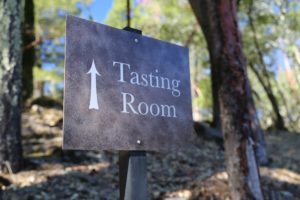
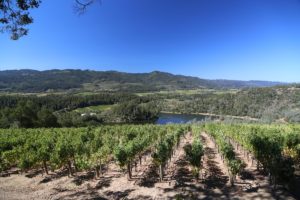
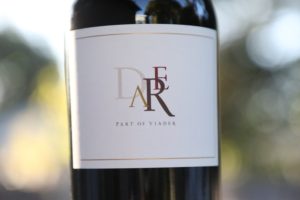 Unlike a number of Napa Valley’s steepest hillside vineyards Viader does not use terracing, rather the grapes are planted in an east/west facing direction with the vines flowing straight down the up to 32% grade slopes, or as one of their hosts told us, “the steepest slopes would be like skiing down a double black diamond at a ski resort”. This vineyard design is much more often used in parts of hillside European wineries; here it is in line with the natural progression of the sun as it drops down in the west. Varieties planted here include Cabernet Sauvignon, Cabernet Franc, Petit Verdot, Malbec and Syrah.
Unlike a number of Napa Valley’s steepest hillside vineyards Viader does not use terracing, rather the grapes are planted in an east/west facing direction with the vines flowing straight down the up to 32% grade slopes, or as one of their hosts told us, “the steepest slopes would be like skiing down a double black diamond at a ski resort”. This vineyard design is much more often used in parts of hillside European wineries; here it is in line with the natural progression of the sun as it drops down in the west. Varieties planted here include Cabernet Sauvignon, Cabernet Franc, Petit Verdot, Malbec and Syrah.
Viader most likely played a role in a hillside ordinance adopted by Napa County in 1990. In 1989, there were no such ordinances required by Napa County. That year, after heavy rains, soils from their hillside eroded into Bell Canyon Reservoir, the source that supplies water to the city of St. Helena. Today the county hillside ordinance requires strict erosion-control procedures for hillside vineyards and restricts any new hillside vineyards from being developed on slopes greater then 30%. Existing vineyards on steep slopes can be replanted as long as the correct procedures are followed. And slopes of greater than 5% need an environment impact report.
Prior to the construction of their own winery, Viader produced wine for over a decade at Rombauer Vineyards, which was used as a custom crush winery by a number of now prominent vintners in the valley. The first vintages of Viader were from 1987 and 1988 but these were never bottled. The first commercial release of Viader was from the 1989 vintage – merely 1,200 cases which incidentally were initially sold in Europe before the United States. And because their estate vineyard was not fully mature, they sourced grapes from other vineyards for this wine. Iconic graphic designer Chuck House created the label for this first vintage.
Viader was one of the ill-fated wineries to lose a bunch of wine in a wine warehouse arson fire in Vallejo in 2005 – in fact they had no wine to sell for over one year due to this fire because their 2003 production was lost. Those interested in more information about this Vallejo wine warehouse fire can read Frances Dinkelspiel’s book, Tangled Vines: Greed, Murder, Obsession, and an Arsonist in the Vineyards of California.
In the early 2000s Delia began pursuing making wine with in the Bolgheri region of Tuscany with Italy based winemaker, Stefano Gagliardo. The losses in the Vallejo warehouse fire forced her to sell off property in Italy and pivot to a direct to consumer business model rather than previously, selling the majority of the wines to distributors.
Building the business has involved significant amounts of travel over the years, both domestically and internationally.
Our first visit to Viader was in early April 2007, and if not the first, was among the very first Napa Valley small producers we visited with and reviewed on this site. For reference, we started our research for the Napa Wine Project in November 2006; our initial visits in Napa Valley were at larger wineries. Other early Napa Valley boutique producers we visited with included Amizetta Estate and Ruston Vineyards.
A visit here is always personalized and for serious wine enthusiasts. Part of their tours will be inside the wine cave (slightly more than 16,000 square feet); this was tunneled out of solid basalt rock. Napa Valley wine cave pioneer Alf Burtelson, a general engineering contractor oversaw the drilling of their cave. Alf is well into his 80s now and long since retired although is still living in the northern part of Napa Valley. On slow days the drill only moved merely a foot forward.
For a period of time in the 1980s Alf’s company was the only company drilling winery caves within Napa Valley. During his time in business, caves evolved from only being used for wine production to being used for event spaces and needing commercial kitchens and bathrooms. His drilling rig was a Dosco MK2a Roadheader which was originally used in the UK for drilling coal mines. Alf told us he chose this equipment because it was able to drill curved ceilings rather than some of the American equipment at the time which could only drill flat ceilings. He sold his company in 2002; the last winery cave he drilled in Napa Valley was for Bryant Family Winery. A look at Napa Valley’s wine caves including the significant contributions that Alf made to the valley is highlighted in the book, Into the Earth: A Wine Cave Renaissance by Daniel D’Agostin and Molly Chappellet.
A small hospitality center is built on the side of a hill and overlooks their vineyards and part of the valley floor below. This is where guests will enjoy a sit down tasting of 4-6 of their current releases. Allow at least 90 minutes for both the tasting and the visit to one of their vineyard blocks and the cave. This space was formerly the family home built in 1989 and designed by architect Richard MacRae.
Select Wines
Viader produces limited world class wines, firstly rooted in terroir, but also in exceptional care to details in their vineyards and cellar.
Cabernet Franc
The 2020 DARE Napa Valley Cabernet Franc is deep ruby in color; the sweetly fruited bouquet offers scents of blackberry preserves, raspberry jam, Pakistani mulberry (shoutout here to our favorite mulberry farm, Very Mulberry located in Brentwood, CA), dark cherry, Santa Rosa plum, red licorice and some subtle barrel influences including of all spice, cinnamon stick and clove. The bouquet is a ripe expression of this variety with no herbal characteristics sometimes found in earlier harvested grapes or Cabernet Franc growing in a cooler climate. And it holds its fruit characteristics very well as the wine warms in the glass; for reference we are tasting this wine on a well over 100 degree day with no air conditioning. On the palate there are flavors of red plum, cherry, currant and raspberry. The texture creates a pleasing tension in the mouth featuring finely grained but grippy tannins; they are well tumbled with a chalky character and a noticeable and persistent dusty grip. We would love to pair this wine with pork chops covered in a rub of brown sugar, paprika, sea salt, cumin, black pepper, and cayenne pepper and a BBQ.
Homenaje
The newest wine to their portfolio is the Viader homenaje (homenaje means tribute in Spanish), a tribute to Alan’s grandfather, to Alan’s time working one harvest in Mendoza, Argentina at the acclaimed Achaval-Ferrer Winery and to Malbec itself.
The 2018 Homenaje by Viader is a blend of 61% Malbec and 39% Cabernet Sauvignon. This wine is deep ruby in color and almost opaque in the glass; the ripe and very open-book bouquet offers aromas of blackberry, boysenberry, dark plum, mulberry, dark olive, dark chocolate, mocha, coffee grinds and an additional aroma that is hard to define but perhaps closely resembles a rusting iron spike sitting in the hot sun. This is a richly layered and highly opulent bouquet. The palate echoes the aromatics to some extent with ripe fruit including of blackberry, boysenberry and dark plum including the spiciness tasted from plum skin. The finish lingers with grainy and granulated tannins, a warmth of alcohol, a dark woodsy spice, black pepper and a persistent and broadly distributed dryness. We could see pairing this with an Argentine asado some late Spring afternoon somewhere near Tigre in the Paraná Delta in Argentina.
The 2016 Viader “Homenaje” is the inaugural release of this wine; it is a blend of 50% Malbec and 50% Cabernet Sauvignon. This non-traditional blend is a unique Napa Valley offering. The bouquet is highly aromatic with a diversity of aromas including blackberry, black licorice, cardamom, hints of sage, a dusty earth nuance and an assortment of darker spices. Shows plenty of muscle across the palate both in depth of flavor and robust and gravelly textured tannins. Darker spices also linger for some time on the finish. Showcases beautiful fruit.
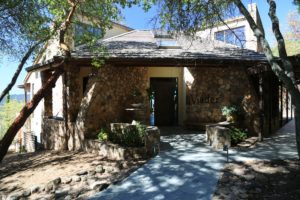
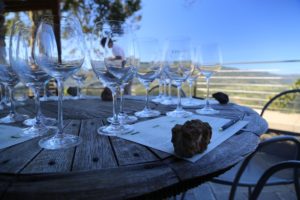
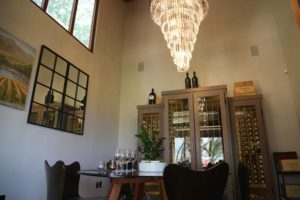
Viader
Viader’s signature blend is simply called Viader and was the first wine they sold commercially; this bottling is always a blend of Cabernet Sauvignon and Cabernet Franc. Unlike most wineries that create this blend using Cabernet Franc as a lightly supporting influence, the Viader wine showcases both varieties.
The 2016 Viader is a blend of 72% Cabernet Sauvignon and 28% Cabernet Franc. This wine is deep ruby in color; the sweetly fruited bouquet offers aromas of raspberry jam, licorice, cherry liqueur, blackberry, baseball mitt being used on a hot day and assorted dried herbs. The palate offers plenty of fruit and character with flavors of dark cherry, blackberry and plum with accompanying notes of licorice, lavender and lightly toasted oak. The gravelly and dusty tannins outpace the fruit on the finish. This wine is drinking well at 8 years post vintage at the time of our tasting.
The 2015 Viader is 69% Cabernet Sauvignon and 31% Cabernet Franc. This wine offers bright and ripe fruit aromatics; it is lively and fresh in the glass with notes of cedar, brown chocolate and darker spices. This is an opulent bouquet but simultaneously retains an elegance. The palate sports flavors of both blueberry and blackberry with long lasting well-integrated slightly dry tannins. Despite an alcohol listed as over 15%, this bottling shows bright acidity and features a mouthwatering finish.
Black Label
The 2019 Viader Black Label is 35% Cabernet Sauvignon, 35% Syrah, 22% Cabernet Franc and 8% Malbec. This wine is deep ruby and opaque; the initial aromatic hit is floral including of lilac and violets accompanied by dark plum, bramble, dark cherry, old cedar box and as it continues to evolve, notes of cocoa powder, dark chocolate, cinnamon stick and clove. The palate is intensely flavored and brimming with darker fruits such as plum, blackberry, boysenberry, bramble and dark raspberry. And there is an accompanying savory attribute including dried herbs (sage), dried bay leaf and a note of pepper. The firm and gravelly textured tannins persist beyond the fruit on the extended finish. Very cellar worthy. We would love to try the 2021 vintage in particular of this bottling.
—
All their vineyards are farmed organically and for about 10 years were managed using biodynamic principles (from 2001 to 2011). Briefly biodynamic farming involves three things; building the soil using special natural compost, philosophically farm by pruning and harvesting based on phases of the moon and planets and controlling pests and diseases without chemicals (cover crops, use plants that attract beneficial insects). They discontinued farming biodynamically after judging the increased costs were not having the desired results in the vineyard.
In 2017 Viader received a Napa Green Winery certification, a program overseen by Napa County recognizing wineries for their efforts on conserving water, energy and reducing waste. In 2018 Viader received a separate certification, Napa Green Land highlighting their focus on sustainable farming and protecting against erosion into the Napa River watershed among other efforts.
The Tubbs Fire in 2020 burned a significant portion of their property including destroying about 2/3 of their grapevines – which have since been replanted including small blocks of Tempranillo and the Portuguese variety, Touriga Nacional. Having a cave on the property was especially beneficial this year, as stored wines including what had already been harvested from the 2020 vintage were safe inside the cave.
Viader consistently receives high accolades from some of the wine industry’s most notable critics. In 2000, Wine Spectator Magazine awarded Viader’s 1997 Cabernet Sauvignon/Cabernet Franc blend the number two wine in the world in their annual list of top 100 wines. The next year it was awarded the number three spot on their annual list, the only Napa Valley wine to crack the top 10. Guests to their tasting room can read numerous magazine and newspaper articles about Viader, Delia and their story hanging in frames on the walls.
Total production is around 4,000 cases annually with most of the wine sold direct to consumer through their allocation offerings. A small percentage of their wines are distributed both domestically and also in select international locations including in Europe and parts of Asia. Often limited selections of library and larger format wines are available directly on site through in-person visits.
For more information, to schedule a visit and or to join their allocation list, see: www.viader.com
Hospitality/Estate
Vineyards
Cave
Sorbonne University, Paris (where Delia earned her Doctorate)






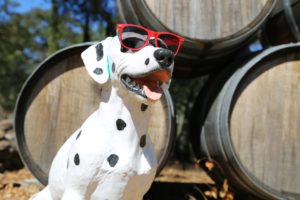
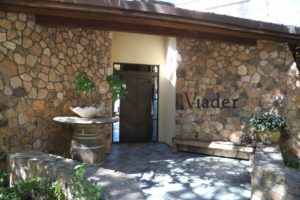
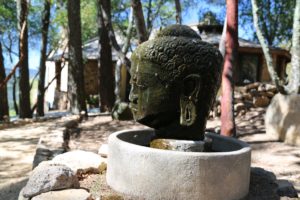
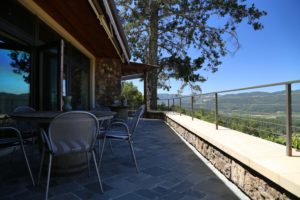
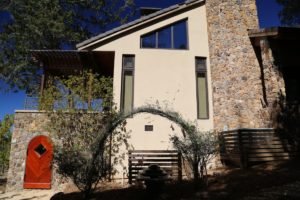
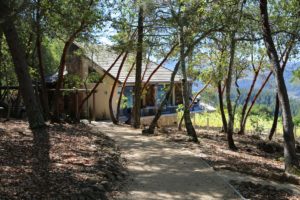
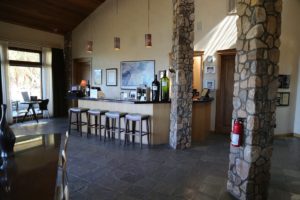
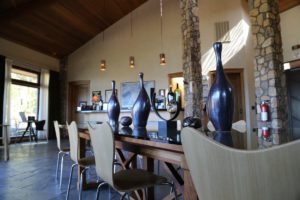
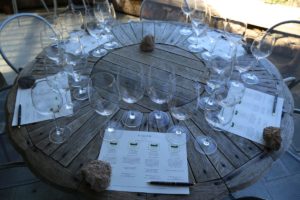
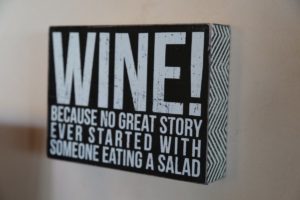
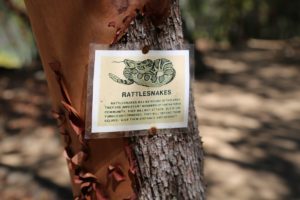
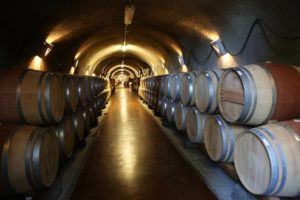
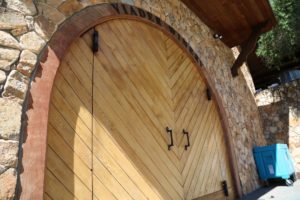
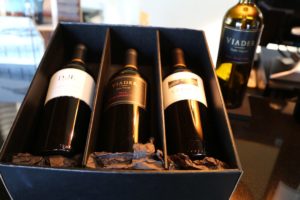
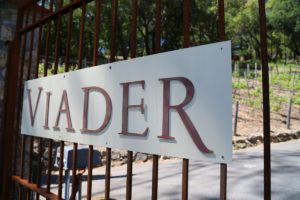
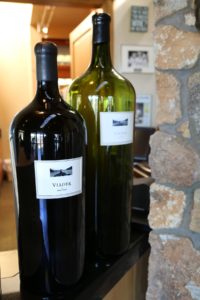
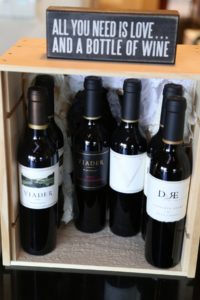
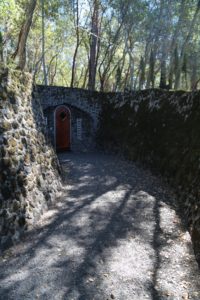
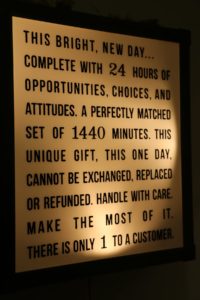
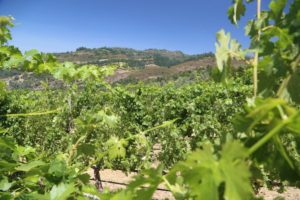
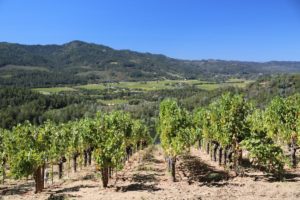
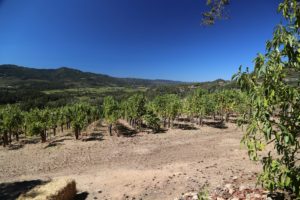
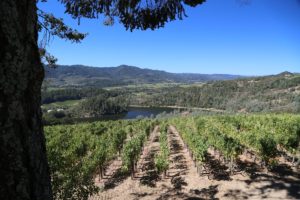
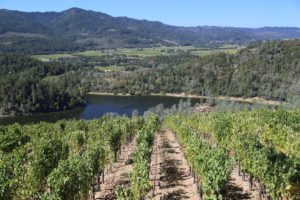
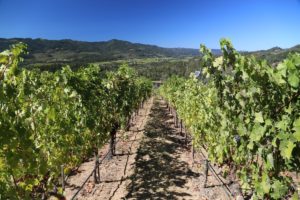
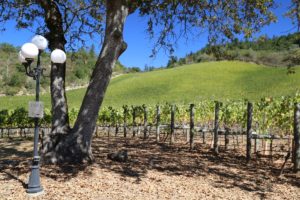
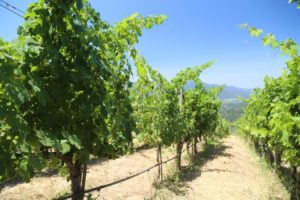
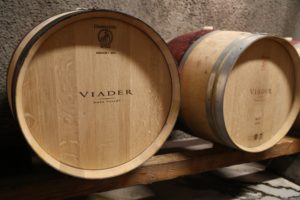
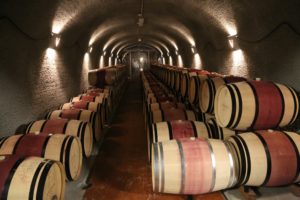
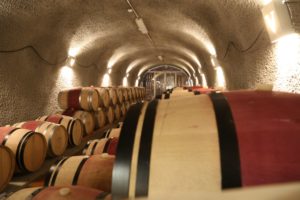
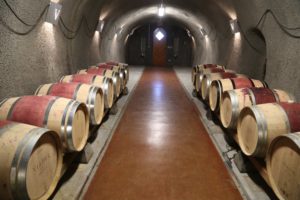

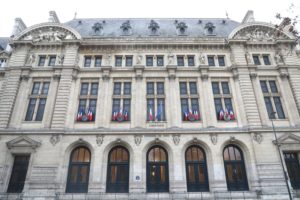
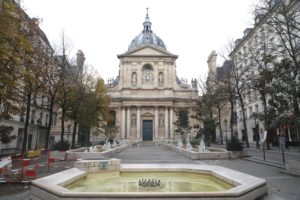

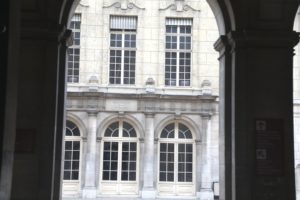
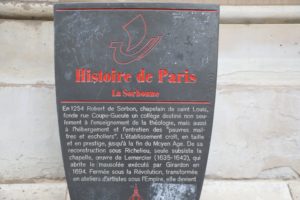


Leave a Reply